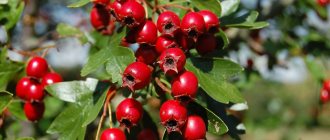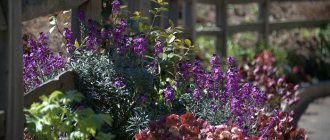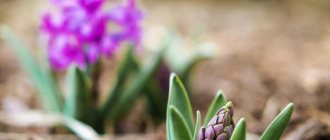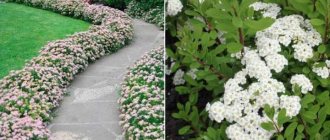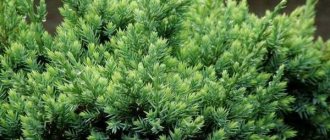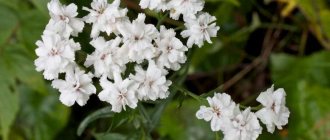Hawthorn: planting and care in open ground
Common hawthorn is a large-fruited tree from the genus Hawthorn, family Rosaceae. The average age of a tree is about 300 years. It looks like a large shrub at the beginning of growth and like a tree 3-8 m high in adulthood. The trunk and branches are light gray in color with spines up to 3 cm, with the exception of pinnate hawthorn. This variety is the only one without thorns on its branches. The leaves are thin, dark green above, light green below, serrated at the ends of the branches, and three-lobed at the rest.
Flowers up to 1.5 cm in diameter, collected in inflorescences of 6-12 pieces. Hawthorn blooms in late spring - early summer, and bears fruit by early autumn. The fruits are elliptical in shape, up to 1 cm in diameter, can be blood-red, yellow and whitish in color, the flesh is juicy.
Hawthorn
Hawthorn grows both in North America and throughout Eurasia. In Russia, it will also bloom and bear fruit well in both the Moscow region and Primorye.
The most common varieties of hawthorn for country gardens:
- Gang;
- Visit;
- Zvyata;
- Sbignev;
- Lava.
In order not to worry about careful care in the future, you need to choose the right growth conditions for the hawthorn before planting. The main factors for planting a tree, like everyone else, are the choice of soil, the degree of lighting and humidity of the area. This will determine whether the plant will get sick, whether it needs additional watering and feeding, and how it will bloom and bear fruit.
General characteristics
Hawthorns from the Rosaceae family are represented by deciduous or semi-evergreen trees and multi-stemmed shrubs with powerful roots and a dense compact crown. Their height varies - from 3 to 12 m. The root system occupies an area with a diameter of 4 m or more, and goes to great depths, which makes it possible to provide the plant with nutrients and moisture even in the driest periods, as well as strengthen loose slopes.
Related article:
Ways to protect an apple tree from rodents

On straight, weeping or curved strong branches there are developed spines (0.5-10 cm) - these are modified shoots. The leaf is petiolate or sessile, can be whole, dissected, lobed, the edge is smooth or jagged. In autumn, many species change their green color to orange, golden, brown, and purple.
Umbrella-shaped or corymbose inflorescences are formed by small (1-2 cm) flowers with a slightly pleasant aroma. Their color can be white, pink, red. Due to the yellow, purple, pink anthers, the flower looks bright and very decorative.

The fruits (small apple) are small (diameter from 0.5 to 4 cm), of different shapes (round, oval, pear-shaped), contain from 1 to 5 seeds. Their skin is dense, red, cherry, black or orange; the taste and consistency of the pulp depend on the variety. Ripening period is from August to September. Hawthorn begins to bear fruit and bloom after 10-15 years, and lives a long time - from 200 to 300 years.
About 47 species grow in Russia. The most common hawthorn found in gardens is the common prickly, dotted, blood-red hawthorn.
Distinctive features of most species and varieties: high frost resistance, do not like shading (especially on the south side), grow poorly in lowlands, on acidic soils, susceptible to powdery mildew and leaf rust.
Related article:
We treat fruit trees
How to plant hawthorn
Floribunda rose: planting and care in open ground
For hawthorn it is better to select heavy but fertile soil. Although the tree has no special preferences, it can also grow in loamy, sandy or calcified soils. It is much more important to take into account that there should be no accumulation of moisture there; hawthorn does not like this. If you simply cannot find such a place, then some gardeners make artificial drainage. To do this, the planting pit is lined with gravel, brick fragments, and pebbles.

How to plant hawthorn
It is worth choosing a sunny area, however, there are varieties of hawthorn (for example, Paul) that tolerate shady conditions well, but you should not take risks, because the flowering and fruitfulness of the tree will depend on the light. There is no reason to worry that the tree will burn in the sun, since hawthorn tolerates even strong sun.
Description of the hawthorn fruit
Hawthorn fruits are edible, but not all have high taste. They are spherical or pear-shaped; color, depending on the type, can be a combination of yellow, orange and red; There are black fruits. The yellow, red or green pulp contains 1 to 5 seeds. The seeds are triangular, with a hard shell.
Photo gallery: variety of hawthorn fruits
Ornamental varieties of hawthorn have small berries, up to 1 cm, and rather dry. In fruit varieties, they look like small apples, fleshy, with a sour taste; The diameter of the fruit reaches 3 cm. Hawthorn berries are collected in a cluster.
Table: hawthorn varieties
| Variety name | Fruit color | Fruit size, cm | Taste qualities |
| Softish | Orange-red | 2 | +++++ |
| Zbigniew | Bright red | 2 | +++++ |
| Lyudmil | Orange-red | 2 | +++ |
| Shamil | Red | 2 | +++++ |
| Eastern orange | Yellow | 2 | +++++ |
| Chinese | Red | 3 | +++++ |
| Far Eastern green meat | Black | 1 | +++ |
| Canadian red | Dark purple | 1,5 | very juicy |
| Pontic | Yellow, green-yellow | 3 | +++++ |
Hawthorn fruits are recommended to be added when making preserves and preserves, as they contain a lot of pectin and give the preparations a piquant taste.
Hawthorn propagation
Daffodils: planting and care in open ground
When asked how to propagate hawthorn, experienced specialists offer the following options:
- layering;
- cuttings;
- seeds.
The propagation scheme by layering is based on the fact that in the spring a plant shoot is placed in a hole in the ground, secured and covered with earth. Then this area needs to be watered and fertilized, and by autumn the shoot will take root. It is cut off from the mother tree and planted as a separate plant.
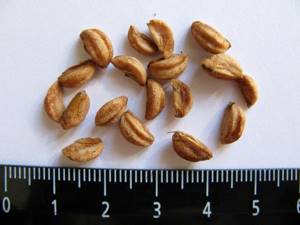
Hawthorn seeds
Propagating hawthorn by cuttings is a more complex process. Cuttings can be taken in the spring before the sap flow season or in the fall after the leaves fall. First you need to select the shoots. At this stage, it is important to understand which shoots will take root well. They should not be frostbitten, without visible damage, and 1-2 years old. The best shoots are in the middle of the hawthorn on the south side of the crown. They need to be cut into 10 cm pieces.
It is worth noting that there is a way to propagate hawthorn by cuttings, when not the shoots of the tree are used, but its roots. For cuttings of hawthorn, roots of at least 2 cm are selected. Next comes the processes of root formation, growing and planting - everything is as usual.
After the cuttings are cut, they need to be placed in a root-forming solution, then planted in a greenhouse in specially prepared soil made of peat and sand. After planting, the soil of the cuttings is moistened with the same root-forming solution.
Note! If the shoot is immature, it must be pruned under a bud or node for better protection against diseases. If already lignified, then in the center of the internode. The cutting angle is strictly 45ᵒ. The cutting tool is sharpened and disinfected.
The next stage is growing. Some gardeners skip it, but it is very important for the overall health of the plant. For this purpose, fertile soil is specially selected and flavored with chalk and defecation. The cuttings are planted in the soil, keeping a distance of 20 cm between them. The growing period is long - up to 4 years. All this time, the plants are cared for using standard procedures (watering, loosening, pruning). In the second year they are fed with nitrogen fertilizer. When the seedling reaches 60 cm, it is cut off and 2-3 shoots are left.
Many novice gardeners are concerned about the question of how hawthorn propagates by seeds, and whether it is possible to get anything from it. You can grow almost anything from seeds, but is it worth it? The hawthorn seed has a thick shell and takes a long time to awaken. When propagated by seeds, they will need to be stratified for about a year. After this, they are planted in the garden, but seedlings may appear after 2 years. There is also a high probability that the seeds will be empty, which means all the work was in vain.
Important! Thus, the most convenient method of propagation is the cuttings option, and according to experienced gardeners, root cuttings are more convenient (they take root faster, forming a strong seedling).
What is hawthorn
Hawthorn is a tree-like shrub or low tree that belongs to the Rosaceae family. It is actively used in the form of an ornamental and medicinal plant; the fruits are eaten.
The hawthorn shrub is not picky about soil, but grows best in deep, moderately moist and well-drained fertile soils. Unpretentious in cultivation, light-loving and winter-hardy. Hawthorn is easy to care for; all you need to do is trim it periodically and remove dry branches; heavy pruning is required during replanting.
Hawthorn propagation occurs by sowing seeds and root shoots. Cultivated varieties are propagated by grafting.
Many people wonder whether hawthorn is a bush or a tree. Answer: both a bush and a tree. It all depends on how you prune the plant. Hawthorn can grow into a small tree or shrub if you prune it back heavily.
The crop is suitable for growing in the Moscow region.
How to plant hawthorn: preparation
Tulips: planting and care in open ground
Many people find planting hawthorn seedlings simple and easy, since the seedling will be 100% accepted, and its growth will be noticeable next year. Be that as it may, there is also a technology for planting in open ground, which is better to become familiar with in advance.
First, the landing site is prepared. This should be done half a month before planting. You need to dig a hole up to 80 cm deep, and the width is the size of the root system of the seedling. At the bottom of the hole, you need to create a drainage system up to 20 cm thick. Then add sand, humus, and peat from above. Everything is covered with soil and left until planting.
When planting a seedling, you need to straighten its roots and place them in a hole without damaging them. Next, the bush is dug in and watered.

Hawthorn seedlings
Those who want to plant hawthorn for hedges should know some nuances. For planting, you need to dig out not individual recesses, but a ditch in a strip along the perimeter of the fence. And it is better to plant seedlings close to each other. When the plants grow a little, they are intertwined together to form a living fence.
Planting hawthorn
You have decided to grow hawthorn on your plot. But where can you buy it? You can buy hawthorn seedlings wholesale or retail on our website of the peasant farm Fruit Garden.
We offer you hawthorn seedlings of excellent quality with a high survival rate. This shrub is suitable for growing in the Moscow region!
How to make an order? Go to the Store section, select Berry Bushes, Other Garden Crops and Hawthorn. Place the required number of seedlings in the Cart, pay for the order and receive it by mail. We guarantee fast shipping and high-quality packaging of shrubs!

After receiving the seedlings, you need to take care of the planting site. As we wrote above, the tree loves heavy and well-drained soils.
Dig a planting hole at least 70 cm deep and 0.5 m wide. If you plan to plant several shrubs, then the distance between them should be at least 2 m.
Before planting, you will need to fertilize the soil. To do this, use a composition of sand, humus, leaf flour and peat. It is also advisable to add lime to the hole, but in such a way that the roots do not come into contact with it. Place a 15 cm layer of drainage at the bottom of the planting hole.
This plant loves light very much, so it is better to plant it on the sunny side, otherwise you may have problems with flowering and fruiting. A characteristic feature of hawthorn is its long root system, as a result of which the tree can only be replanted up to 5 years.
The seedling is transplanted to a permanent place at the age of two years, this is done in spring or autumn. When planting, make sure that the root collar is at ground level. After planting, be sure to water the seedling, mulch the soil in the tree trunk circle, and use peat for this (if desired, replace it with regular dry soil). Good fruiting in hawthorn appears in 6–10 years.
Hawthorn can reach a height of 10 m. But this depends on pruning and proper care. At the same time, the tree is long-lived - 200–300 years.
Hawthorn: cultivation and care
All you need to do when caring for a hawthorn is to remove dead and diseased branches, fertilize it with slurry in the spring in April or May before flowering, water it generously once a month, remove weeds and loosen the soil. These are standard procedures for caring for any garden tree and do not incur significant financial or physical costs.
Important! To prevent hawthorn from freezing in winter, it is recommended to cover it with dry leaves or straw during the first 2 years when cold weather sets in.
From 2 years after planting until the first harvest, you need to feed the plant every year. The first fertilizing is applied in the spring in the form of a nitrogen-based solution, and the second at the end of September from nitrophoska. In the required proportions, the substances are diluted with water and poured into the soil of the plant.
To improve the hawthorn harvest, there is a system of 3 fertilizing.
- The first feeding is carried out when the leaf buds bloom. To do this, monosodium glutamate is diluted with 3 tbsp. spoons per 10 liters of water. For each bush you will need from 20 to 30 liters.
- The second feeding is carried out when the tree begins to color. Consists of potassium sulfate, organic fertilizer effecton. For 10 liters of water it takes 1 tbsp. a spoonful of the first component and 3 liters of the second. One bush will require up to 30-40 liters.
- Fruiting is the season of the third feeding. Ingredients: effecton fertilizer and liquid monosodium glutamate.
Hawthorn blossom
A wild hawthorn bush begins to bloom only 10-12 years after planting. Summer residents who do not want to wait that long are engaged in growing garden large-fruited hawthorn. Varietal cuttings grafted onto seedlings begin to bloom and bear fruit after 4-6 years, in rare cases after 8. The flowering period of the shrub occurs in late spring or early summer.

Why does hawthorn not bloom or bear fruit?
Quite often on gardening forums people ask why hawthorn does not bear fruit. In general, when does hawthorn begin to bear fruit? This happens at the age of 5-6 years, and in some varieties from 8-12 years.
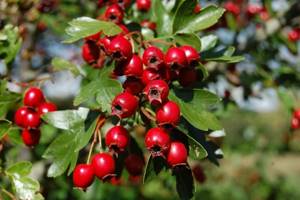
Hawthorn fruits
Some experts recommend cutting the bark on branches 15 cm from the trunk to speed up flowering in May. They claim that this operation may cause the tree to bloom next year.
If there is an abundant growth of the hawthorn crown, this is a sign of subsequent flowering. This means that this year the hawthorn will bear fruit.
It is also worth considering the following cultivation factors:
- the tree should grow in a well-lit area;
- the crown and bark of the tree should not be affected by diseases and parasites;
- the soil should be loosened every season;
- the tree does not need to be filled with water, and liquid should not accumulate in the root system of the hawthorn;
- you need to feed the tree every year;
- the tree needs to remove damaged branches in the spring, but do not get carried away, as severe pruning of the hawthorn will harm future flowering and harvest.
Important! To obtain a faster harvest, it is worth purchasing grafted hawthorn seedlings, or better yet, planting several varieties side by side.
But gardeners do not recommend planting some crops near hawthorn. In particular, it is better not to place the following near a tree:
- pear;
- apple tree;
- cherry;
- plum
All these plants have common pests, such as leaf rollers, hawthorn, and aphids. If one tree becomes infected, all will suffer and there will be no harvest in the entire garden.
Insects feed on hawthorn sap, destroy flowers, and in the spring lay larvae in the bark, thereby destroying the plant. Against them, the tree is sprayed with a soap solution or chemicals (chlorophos or karbofos). If hawthorn is infected with diseases such as powdery mildew or rot, you can get rid of it by removing the affected shoots and treating the tree with a solution based on a fungicide.
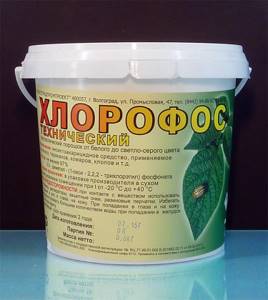
Pest Control Products
Types of hawthorn
Hawthorn has more than a thousand species, 15 of which grow in our country. We will tell you about the most popular ones, which are actively planted and grafted.
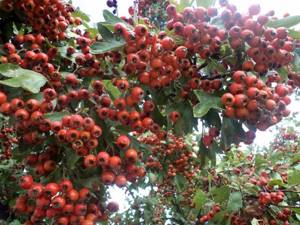
Common hawthorn
It reaches a height of about 5 m. It has bright red fruits with yellow flesh. It tolerates frosts calmly, grows on clay and rocky soils, looks great as hedges, and is easy to trim. Subspecies: Paul Scarlet and Bicolor.
Siberian hawthorn
The tree can reach six meters in height. It has sparsely planted spines that reach a length of approximately 4 cm. Flowering occurs from approximately May 15 to June 15 with white flowers with purple speckles. It begins to bear fruit at the age of 7, and the berries can be eaten. It was this type of shrub that was used to create rowan hybrids.
Green meat hawthorn
It grows in Kamchatka and Sakhalin, as well as in the Kuril Islands, and is propagated by seeds. The berries are black in color with green flesh and have a pleasant taste.
Hawthorn monopolyta
A characteristic feature is rapid growth and dense bark. Looks good in hedges, easily tolerates pruning, producing a large number of shoots. The fruits and flowers of this plant are actively used for medicinal purposes, used to prevent heart diseases.
Hawthorn softish
The height of the tree can reach eight meters. The fruits are orange-red with yellow flesh. Begins to bear fruit in the 7th year.
When does hawthorn begin to bear fruit?
Depending on the species, hawthorn begins to bear fruit in the 5th–15th year of life. Large-fruited varieties produce the first harvest in the 5th–6th year, decorative varieties - much later.
During the first years of life, hawthorn grows very slowly. Its growth increases when it reaches 4–5 years. The faster the crown grows, the sooner the tree will begin to bear fruit. Grafted plants bloom in the 3rd–4th year.
Large-fruited Chinese hawthorn, one of the most delicious varieties, begins to bear fruit at 3 years.
Hawthorn blooms in May - June. It does not bloom for long; the flowers attract bees with a disgusting smell.
During flowering, the smell of rotten fish is felt near the tree due to the dimethylamine content in the flowers.
